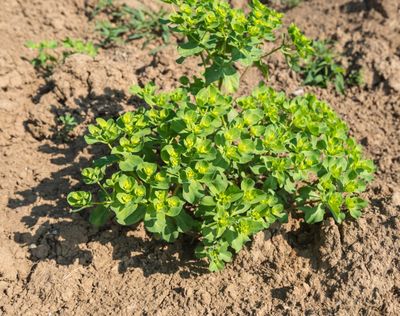Identifying Zone 8 Weeds
Here is a list of some of the most common zone 8 weeds and how to both recognize and manage them: Crabgrass – Crabgrass resembles miniature corn plants, but as the plant matures, the blades bend to the ground and takes on a star-like appearance. While the plant branches out, it continues to develop new shoots from the center. A healthy lawn that is regularly watered, mowed, dethatched, and fertilized will have the best chance of withstanding an invasion of crabgrass. Otherwise, dig the plant out by the roots as soon as it appears in spring, or apply cornmeal gluten while the soil is still cold. In some cases, herbicides may be necessary. Don’t allow the plant to go to seed. Dandelion – Dandelion is easily recognized by bright yellow blooms emerging from a rosette of saw-tooth leaves. If the dandelion problem isn’t widespread, you may be able to maintain control by pulling the weeds, and always remove blooms before the cottony puffballs appear. Corn gluten may be effective when applied in early spring. If all else fails, apply a broadleaf herbicide to mature plants. Sowthistle – Annual sowthistle consists of a rosette of deeply notched, coarse, bluish green leaves and thick, hollow stems that exude a milky sap when cut. Yellow, daisy-like blooms appear from summer to autumn. Annual sawthistle is a tall plant, reaching heights of 4½ feet (1 m.). The best way to gain control of annual sawthistle is to pull the plant up by the roots when the soil is moist, but tough stands may require application of a product containing 2,4D or glyphosate. Spurge – Spurge is a warm-climate weed that forms a dense mat very quickly. Although there are several species, like spotted spurge and myrtle spurge, all send out long, ground-hugging stems with small, oval-shaped leaves growing from a central taproot. Among the most common weeds in zone 8, spurge thrives in hot, dry, sunny sites. Spurge is easy to pull from moist soil when the plants are young, but you must be sure to get every bit of the long taproot. Alternatively, apply corn gluten or a pre-emergent herbicide in spring, or a post-emergent, broad-leaf herbicide for mature plants. The blooms are small and inconspicuous, but they must be removed to prevent spurge from going to seed. Note: Chemical control should only be used as a last resort, as organic approaches are safer and much more environmentally friendly.
